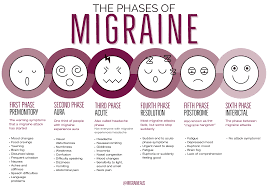Migraine Pain: Causes, Symptoms, Treatment, and Prevention.
What is Migraine?
Migraine is a type of headache that is usually accompanied by a pulsing or throbbing pain on one side of the head. It can also cause symptoms such as sensitivity to light, sound, or smells, as well as nausea and vomiting.
Migraines are often triggered by various factors, including stress, changes in sleep patterns, and certain foods.
They are a recurring condition that affects a significant portion of the population and can have a significant impact on a person's quality of life.
Symptoms of Migraine:
The main symptom of a migraine is a severe headache that is often described as throbbing or pulsing and is typically located on one side of the head. Other symptoms of a migraine can include:
-Nausea and vomiting
-Sensitivity to light, sound, or smells
-Blurred vision or seeing flashing lights
-Temporary vision loss or blind spots
-Dizziness or unsteadiness
-Fatigue or lack of energy
-Muscle weakness or numbness
-Confusion or difficulty speaking
-Abdominal pain
-Diarrhea
These symptoms can last anywhere from a few hours to several days and can be severe enough to interfere with daily activities. Some people also experience aura, which is a set of symptoms that occur before the headache begins and can include visual changes, tingling sensations, or difficulty speaking.
Treatment of Migraine:
Treatment for migraines varies depending on the frequency, severity, and individual characteristics of each person's migraines. The main goals of treatment are to reduce the frequency and severity of migraines, prevent them from occurring, and manage symptoms during a migraine attack. Some common treatments for migraines include:
Pain-relieving medications, such as over-the-counter pain relievers (e.g., Topcynta 100mg) or prescription medications specifically designed to treat migraines.
Preventive medications, taken daily to reduce the frequency and severity of migraines
Non-medication treatments, such as stress management techniques, relaxation techniques, and avoiding trigger factors
Lifestyle changes, such as getting regular exercise, maintaining a healthy diet, and getting adequate sleep
Complementary therapies, such as acupuncture, massage, and chiropractic care.
Precaution of Migraine:
Here are some steps you can take to help reduce the frequency and severity of migraines:
-Keep a headache diary:
Keeping track of when you experience migraines, what triggers them, and what you have done to manage them can help you identify patterns and avoid triggers.
-Avoid triggers:
Common triggers for migraines include stress, lack of sleep, bright lights, certain foods, and changes in weather. Identifying and avoiding your triggers can help reduce the frequency of migraines.
-Manage stress:
Stress is a common trigger for migraines, so finding ways to manage stress, such as practicing relaxation techniques, exercising, or meditating, can help reduce the frequency and severity of migraines.
-Get regular exercise:
Regular exercise can help reduce stress, improve sleep, and prevent migraines.
-Eat a healthy diet:
Eating a healthy diet that is rich in fresh fruits and vegetables, whole grains, and lean proteins can help prevent migraines and reduce the frequency of headaches.
-Get enough sleep:
Getting regular, adequate sleep is important for overall health and can help reduce the frequency and severity of migraines.
-Limit alcohol and caffeine:
Alcohol and caffeine can both trigger migraines in some people, so limiting or avoiding these substances can help prevent migraines.



Comments
Post a Comment